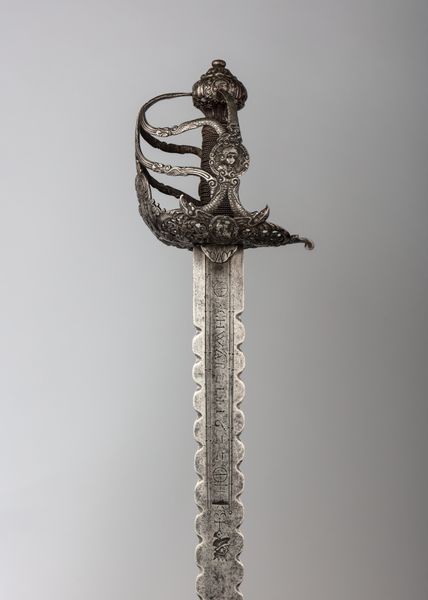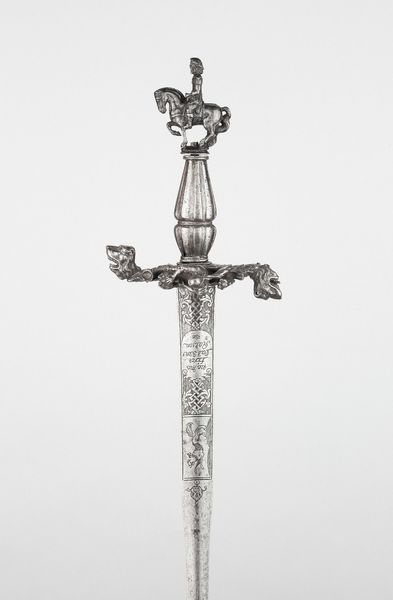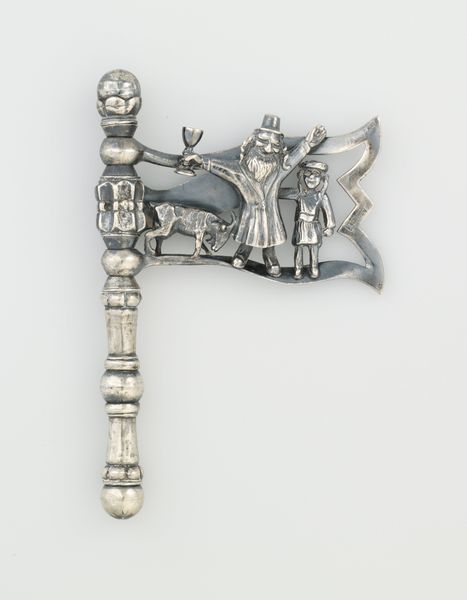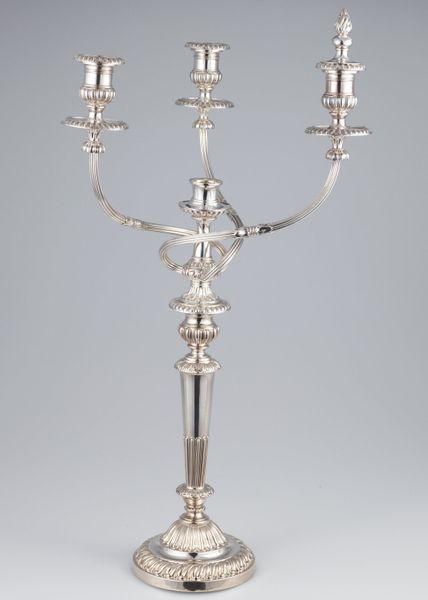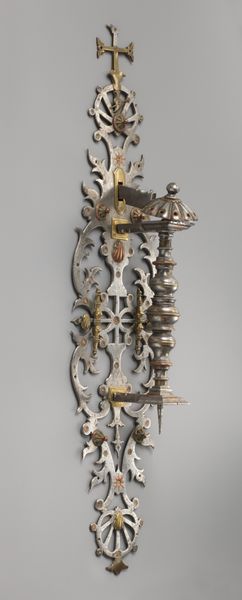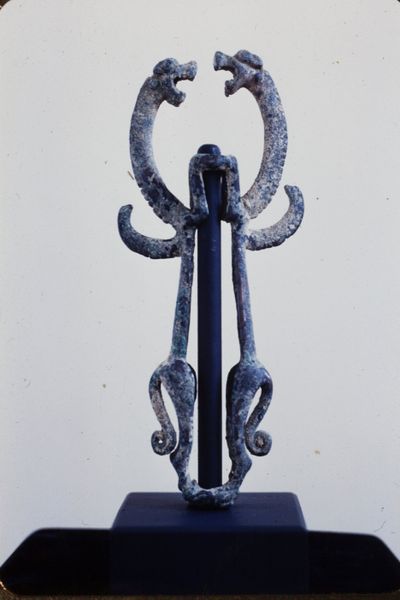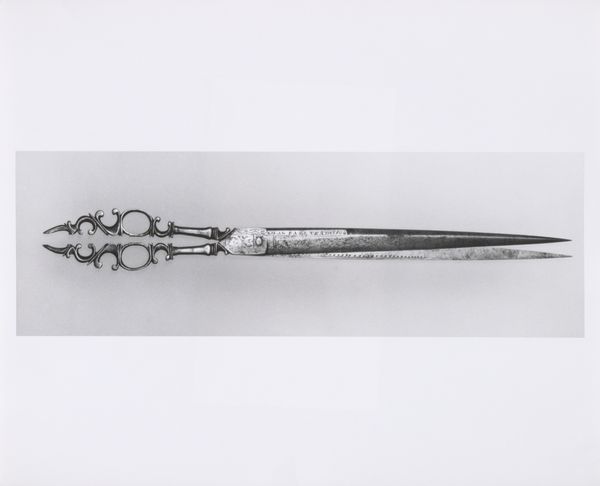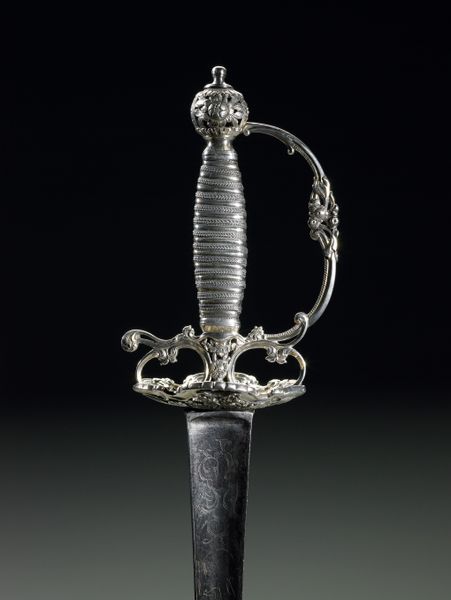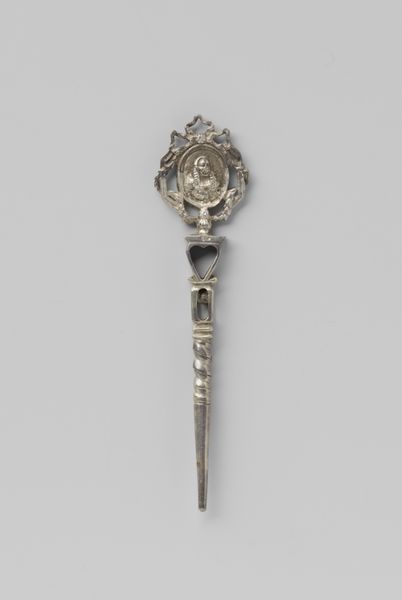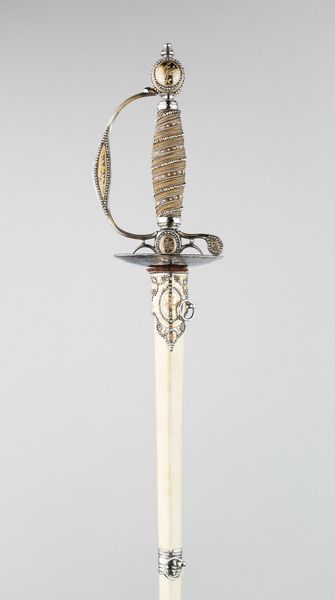
ornament, carving, metal, sculpture
#
ornament
#
carving
#
metal
#
sculpture
#
asian-art
#
geometric
#
sculpture
Dimensions: L. 11 3/4 in. (29.9 cm); L. of head 3 7/8 in. (9.8 cm); W. 2 1/8 in. (5.4 cm); Wt. 4.3 oz. (121.9 g)
Copyright: Public Domain
Editor: We're looking at a "Ceremonial Arrowhead (Yanone)" made around 1645 by Umetada Motoshige. It’s metal, intricately carved, and now resides at the Metropolitan Museum of Art. It strikes me as both beautiful and a little intimidating; like something from another world. What can you tell us about this piece? Curator: It is intriguing, isn't it? Arrows, throughout history, often transcend their practical function, becoming powerful symbols. Consider the Cupid’s arrow, a sharp metaphor for love’s sudden and sometimes painful impact. Or, perhaps, the arrow of Sagittarius, embodying focused intention and direction. Does this ornamentation change the function? Editor: So, this arrowhead wasn’t really meant for hunting? The decoration seems too elaborate for that. Curator: Precisely! The craftsmanship suggests it’s less about practical use and more about ritual or status. Notice the grapevine motif, the attention to detail; consider, what did the grapevine symbolize in 17th century Japan? Its presence could link to ideas of prosperity, fertility, or even a connection to imported cultures. Editor: I hadn’t thought about that connection! I just saw pretty vines. Curator: It invites us to consider the complex interplay between cultures and the evolution of visual symbols over time. An arrow carries that history of being used in hunting, battle, sport, and art and the idea changes along with its function. The artist could use it to invite people to reflect on war and the futility of conflict or even use it to celebrate noble ancestors. Editor: That’s a totally different way of seeing it. I guess I was just thinking of it as, like, a fancy weapon. Now it makes me wonder what other hidden stories everyday objects might be telling. Curator: Indeed! Visual symbols whisper secrets, and decoding them reveals layers of meaning we often overlook. I find this especially intriguing within artistic interpretations of functional forms.
Comments
No comments
Be the first to comment and join the conversation on the ultimate creative platform.

